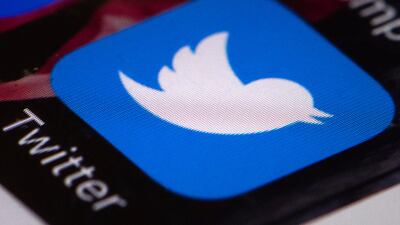Last week, Twitter made a historic decision. In a move representing the biggest change since the social network began, they increased the tweet character count from 140 to 280. With one wave of the technological wand, tweet capacity was doubled. This isn’t a universal feature yet. It is currently just being trialed, but a select few now have the power to tweet 280 (myself included).
The 280-character capacity will almost certainly be rolled out to all users eventually. Whether this turns out to be a gift or a curse, only time will tell. Is it possible that increasing capacity will improve content? At present, Twitter is infamous for its users being abrasive and at times, frighteningly blunt and aggressive. There are even websites devoted to listing and detailing the most vitriolic Twitter wars. People often blame their 140-character limit for their inability or reluctance to engage in more nuanced and gentle discussions.
_______________
Read more
Twitter users get more space but its unlikely to dilute the nastiness
Twitter to trial Tweets longer than 140 characters
Get your tweet on: Twitter reactions to the news of 280-character limit
Big tech has a big problem, which means we all do
_______________
Of course, anger isn’t the only emotion expressed on Twitter, but it is, perhaps, the most common. This is reflected in the recent “what y’all mad about today” meme. Rather than say “good morning”, it became customary to ask the Twitter-using world what it was annoyed about. The humorous assumption being that anger and annoyance is the Twitter world's default state – funny, because it’s true.
As in the offline world, a standard indicator of anger and aggression is the use of curse words. Several research studies have looked at the use of offensive language (profanity/obscenity/hate speech) in Twitter datasets. One recent study of 14 million English-speaking Twitter users found that about 8 per cent of all tweets – 1 in every 13 – contained at least one curse word. Overall, curse words accounted for about 0.8 per cent of all words used. This is a higher rate than that reported in studies of swearing in the offline world (0.5 per cent). The rate of 0.8 per cent might not seem that high, however, when you consider that the use of first-person plural pronouns only accounts for 1 per cent, then we are tweeting expletives almost as frequently as we say the words: us, we and our.
Looking at gender and curse words, the Twitter data suggest that men are the biggest offenders, with male-to-male twitter discourse characterised by the greatest frequency of profanity. Women use profanity less than men, especially when they are tweeting with men. However, when women are tweeting to other women, the curse words also become more frequent.
In exploring emotion, our research has looked briefly at the use of curse words in the UAE's Twitter dataset. One observation from this work is that the rate of obscenities in Arabic is much much lower than it is in English. This might be related to the high levels of bilingualism among the UAE population. We know that uttering obscenities in a second language (L2) is much easier than it is in our mother tongue. Swearing in L2, like lying, is associated with far less autonomic arousal (emotion). It is also worth noting that, in June 2015, the UAE enacted cybercrime laws, threatening fines and custodial sentences for the use of indecent, inappropriate or abusive online language directed at others.
_______________
More from Justin Thomas
Is your workplace making you ill? Soon, you may be able to test it for yourself
World Suicide Prevention Day: our attempts to prevent, hinge on our ability to predict
In an era of fake news, shouldn't we strive to keep it real?
_______________
Such laws seem increasingly warranted, especially since today, hate speech can potentially reach huge online audiences. Online hate speech has also become an important focus of research. One US study examined hate speech on Twitter using geotagged tweets and found striking geographic patterns concerning the states where particular categories of hate speech (racist/homophobic/disability-related) were most common.
Will having 280 characters make us less angry or hateful? I doubt it. Twitter wars used to be waged in 140-character salvos, I suspect we are about to enter the age of the 280-character character assassination, with each Twitter user equally capable of double-barreled belligerence.
Information technology is a blessing. But when people get excited about technological advancements without considering our psychological and behavioural advancements, too, I'm reminded of the following question: If a cannibal now orders his meals online and eats them with a knife and fork rather than with his hands, is that true progress?


